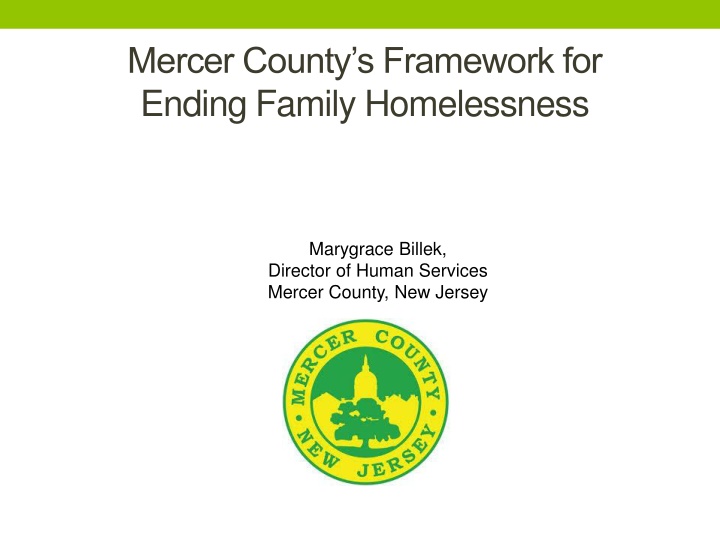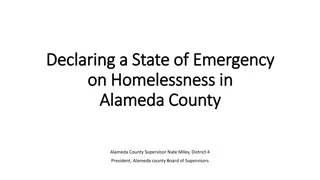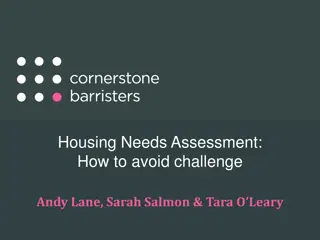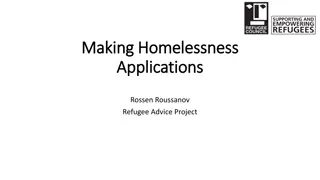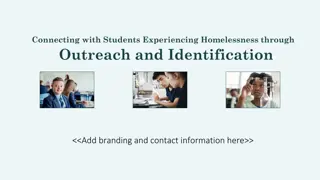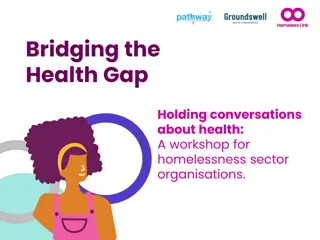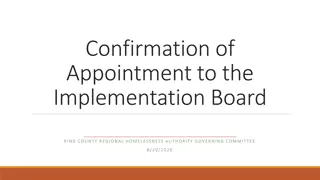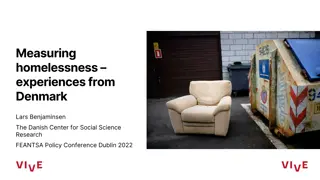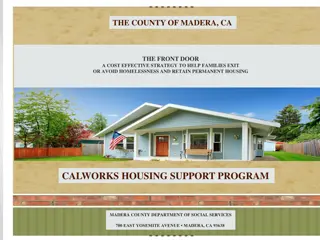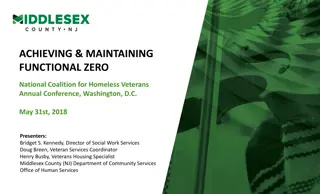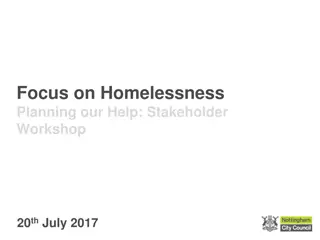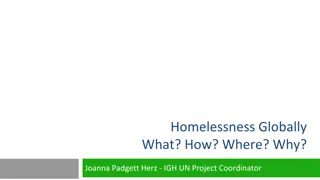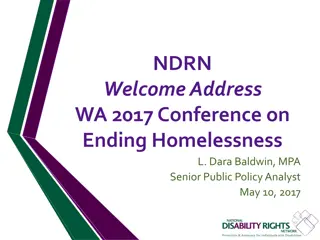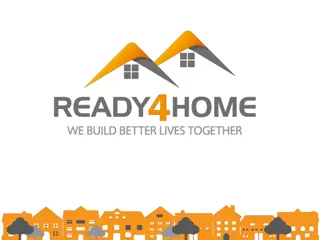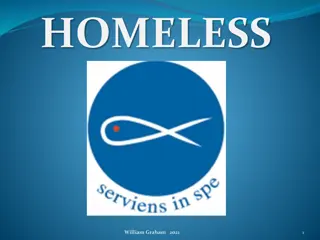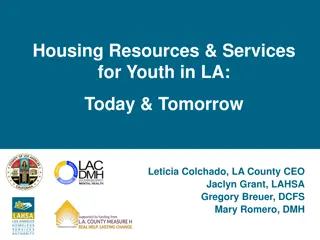Success Story: Mercer County's Innovative Approach to Ending Family Homelessness
Mercer County, New Jersey, implemented a new system focused on rapid re-housing for families experiencing homelessness. By providing short-term shelter, housing stability plans, rental assistance, and case management, they successfully reduced the number of homeless family households by 74% since 2007. The new approach addressed the shortcomings of the old system, such as lack of front-end assessments and prolonged stays in shelters, leading to improved outcomes and cost savings. Through collaboration with non-profits and retraining staff, Mercer County achieved remarkable results in combating family homelessness.
Download Presentation

Please find below an Image/Link to download the presentation.
The content on the website is provided AS IS for your information and personal use only. It may not be sold, licensed, or shared on other websites without obtaining consent from the author.If you encounter any issues during the download, it is possible that the publisher has removed the file from their server.
You are allowed to download the files provided on this website for personal or commercial use, subject to the condition that they are used lawfully. All files are the property of their respective owners.
The content on the website is provided AS IS for your information and personal use only. It may not be sold, licensed, or shared on other websites without obtaining consent from the author.
E N D
Presentation Transcript
Mercer Countys Framework for Ending Family Homelessness Marygrace Billek, Director of Human Services Mercer County, New Jersey
Old System: Manages Homeless in Shelters Housing Crisis - Homelessness Permanent Housing Transitional Housing Emergency Shelter Average 6 month 1 year PROBLEMS WITH THIS SYSTEM : No front end assessment to help identify and prioritize families with the highest needs and those who could be rapidly rehoused People were staying in TH too long, and were not exiting to Permanent Housing Current system was NOT ending homelessness and was very costly- $5M from TANF agency alone.
New System: Rapid Re-housing for Families Here s what we do: Screen and assess the needs of the family Short term Interim Housing (less than 30 days) Enter MCBOSS Provide short term shelter to resolve immediate crisis Develop housing stability plans with families Rapid Re- housing Screening & Assessment Assist with housing searches and landlord negotiations Rental and utility assistance Case Management
RRH Before and After First Iteration RFP ed for a non-profit vendor Trained the staff in Case management HPRP model as a basis Frequent visits and contacts Small caseloads Used a housing locator (best model was using the non-profit expertise) Hired an employment counselor/coach Continually reevaluate the families needs in collaboration with the families Discontinue at home services within 5 6 months, but leave door open for future contact if needed. TANF agency Rapid Exit Redirected all Family social work staff to be RRH case managers Retrained staff in outreach case management Social workers became social workers again, not paper pushers Messaging is the same as the non- profit message, we are here for a short time to get you back on your feet, this is short term intervention This was a very different message TANF staff assist with housing location and refer to One Stop (WIB) for employment Transfer higher barrier families to local non-profits who provide different levels of care
Point in Time Count Homeless Family Households Since 2007, the number of homeless family households in Mercer County has declined by 74% compared to 38% in NJ and 16% nationally. 271 197 158 155 150 110 78 71 2007 2008 2009 2010 2011 2012 2013 2014 Source: onecpd.info/reports/CoC_PopSub
Rapid Re-housing Works! Reduced Recidivism Rate Decreased Length of Time on Public Assistance Increased Earned Monthly Income Rapid Re-Housing: 6% Transitional Housing: 21% Rapid Re-Housing: 189 Days Transitional Housing: 339 Days Rapid Re-Housing: 50% Transitional Housing: 14%
Rapid Re-Housing Decreases Public Assistance spending per family by 50%. Old System: New System: Rapid Re-housing Emergency Shelter to Transitional Housing Service Rate per Day Average LOS Cost per Family Service Rate per day Average LOS Cost per Family Emergency Shelter $125 54 Days $ 6,750 Emergency Shelter $125 87 Days $10,875 Transitional Housing $84 253 Days $21,252 Rapid Re-Housing Total Average Cost Per Family: $50 189 Days $9,450 $16,200 Total Average Cost Per Family: $32,127
Getting it off the ground: 1. Develop common goal to change homeless system for families 2. Stakeholder Buy-In 3. Collaboration 4. Redirection of Funds 5. Piloted 3 year RRH Project Our process proved that: 1. Families can move quickly into housing if they have the right supports 2. Families spend less time being homeless 3. Families are less likely to return to homelessness 4. Families can increase their earnings
